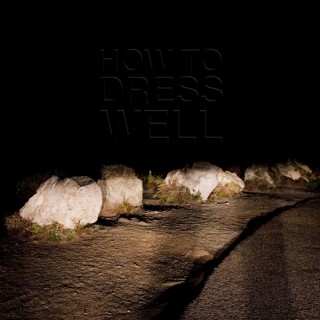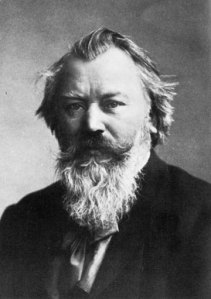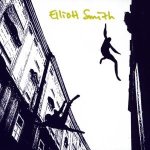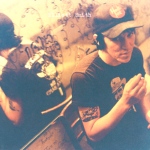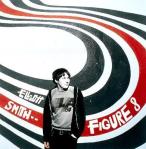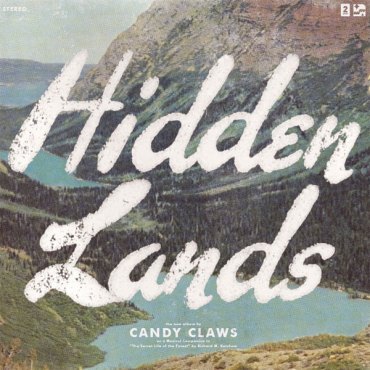Scratched Into Our Souls
How To Dress Well – ‘Love Remains’
Leave a Comment
The falsetto is not to be trifled with. For centuries, the falsetto has been a sign of power and the desired vocal affect of countless male singers. Of course, it wasn’t until the 20th century that falsettos began to be seen as a sign of vulnerability, emotion, and even fragility. Thankfully, for every effeminate Chris Brown or Chris Martin knock-off polluting the airwaves with cheesy sentimentality we have artists who are willing to use the falsetto in interesting, powerful ways. Some artists even pull it off so well that they create a name for their own aesthetic brand: one of the leading cliches used in journalism to describe a powerful falsetto is “Prince-like.” It’s been too long that the falsetto hasn’t been seen as the desired style of high-art male vocals.
One of the most engaging and interesting albums of recent memory is Love Remains by How To Dress Well. If you forgot that the falsetto could be as emotionally poignant as Kurt Cobain’s screams, think again. One listen to Love Remains will you leave you emotionally floored and physically drained, for Tom Krell’s falsetto is one of the most affecting I’ve heard since the first time my ears graced Bon Iver’s For Emma, Forever Ago.
 Besides the vocal similarities and the emotional range, similarities between the music of Tom Krell and Justin Vernon stop there. Where Bon Iver is a mostly acoustic project that is clearly the work of a singer-songwriter, giving off the warm vibes of hearing a man sing his sorrows to you on his acoustic guitar, How To Dress Well is a project that is harder to pin down. The melodic structure is influenced heavily by the hooks of r&b classics, and it’s not hard to imagine a hook as strong as the one on “Ready For The World” could dominate the airwaves.
Besides the vocal similarities and the emotional range, similarities between the music of Tom Krell and Justin Vernon stop there. Where Bon Iver is a mostly acoustic project that is clearly the work of a singer-songwriter, giving off the warm vibes of hearing a man sing his sorrows to you on his acoustic guitar, How To Dress Well is a project that is harder to pin down. The melodic structure is influenced heavily by the hooks of r&b classics, and it’s not hard to imagine a hook as strong as the one on “Ready For The World” could dominate the airwaves.
Unfortunately, this is not traditional r&b music, so the universal appeal is lost when you look at the other aspects of the music. The recording of Love Remains is lo-fi to the extreme; when Krell hits his higher notes and uses more dynamic range, his recording equipment crackles and loses its clarity, making for a brilliant affect of music that is both fuzzy and strained. The music often veers on more experimental territory, to the extent that one of his “similar artists” on last.fm is the notable witch-house band oOoOO.
One thing is certain: this record is an entrancing, entertaining, and authentically raw experience that shouldn’t be missed. The music won’t be for everybody, but I can guarantee that you haven’t heard very much music that sounds quite like this, and that in itself is an accomplishment. Of course, when the hooks are slick and the atmosphere is gorgeous, you’re going to catch some people’s attention. I expect great things in the future from How To Dress Well, and it’s not hard to hear some greatness in them now.
Listen: How To Dress Well – “Walking This Dumb”
Bruce Springsteen – ‘The Rising’
Leave a Comment
It’s been nine years since that tragic day. You know which one I’m talking about – you remember where you were the moment you heard planes had been flown into the World Trade Center in New York City, forever shattering the blissful optimism of the post-Cold War 90s and changing the world and the Manhattan skyline, taking innocent lives with it. Following 9/11, our lives have all changed. There is no bright side to the events of that day, but some of the most moving art has been born out of the ashes. Bruce Springsteen’s The Rising is but one example. Who better than Bruce to create an album to remember those who have passed on before their time, creating an album that didn’t play off fears but celebrated the sacrifice of heroes and mourned the loss of loved ones. Toby Keith – and the rest of CMT – should be ashamed of themselves.
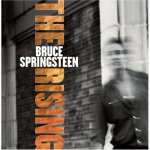 Bruce Springsteen – The Rising (2002) – Following the tragedy of 9/11, The Boss gives America not what it wants, but what it needs.
Bruce Springsteen – The Rising (2002) – Following the tragedy of 9/11, The Boss gives America not what it wants, but what it needs.
In the months following the tragedy of 9/11, Bruce Springsteen was busy at work on his comeback-album following the reunion of the E Street Band. As Springsteen was trying to decide what it meant to be a part of the E Street Band once again, he was writing songs that would deal with what it meant to be an American following such a horrific attack against our nation. Smartly, while Country Music Television wrote songs imploring a preemptive ass-kicking against the Middle East, Springsteen realized that revenge was not actually going to get the world anywhere; an eye for an eye would only make us all blind with rage and ignorance.
Instead, Springsteen focused his songs on creating a sense of community, creating an album that was a fitting tribute to the fallen heroes and the unfortunate victims of the attacks, and subsequently giving those of us left behind a place to gather and celebrate their lives. Think of it as a musical forum for mourning: Springsteen’s songs on The Rising are the most gospel influenced he has ever written, while still sounding like a natural extension of Springsteen’s 70’s classic rock sound. The album’s opening tracks set the tone. “Lonesome Day” takes the perspective of somebody who has lost a loved one and needs to find the strength to somehow get through each day, one day at a time. “Into The Fire” is a memorial to the firefighters who risked their lives for the lives of others that day, as they travelled “up the stairs, into the fire.” The album continues like this, with song after song of Springsteen telling it like it is, expressing as much mourning as can fit into one album. The song titles practically say it all: “Nothing Man,” “You’re Missing,” “My City of Ruins,” “Empty Sky.” The album’s two highlights are the ones that create the deepest sense of community: “Mary’s Place” and “The Rising.” The former sounds like a call to celebrate the life of a loved one as opposed to mourning their passing, and the later is the best song Springsteen has written since “I’m On Fire.”
With each passing year, the emotions felt on a day like September 11th become less and less tangible as they slowly become memories. With that, too, the sense of deep loss at those who left us that day is simultaneously forgotten, for better or worse. When I listen to The Rising, Springsteen seems to have offered to take on the burden of helping America through her grief. For the first time in years, Springsteen sounded proud to be born in the USA, and seems to have instinctively known that nobody was born to run from tragedy.
Listen: Bruce Springsteen – “The Rising”
Top 12 Hold Steady Songs
Leave a Comment
It’s no secret: The Hold Steady rank amongst my absolute favorite bands of all time, coming second only to The Greatest Band That Ever Was (if you don’t realize I’m talking about The Beatles, shame on you). This year has really been a huge Hold Steady year for me, too. The band released a new album in May, the absolutely fantastic Heaven Is Whenever, and the band has played seven shows in Southern California, all of which I attended. Adding those seven shows brings my running total of Hold Steady extravaganza’s up to a grand total of twelve – by far the most live shows I have seen by any band. So, what more is there to say about The Hold Steady’s perfectly balanced blend of classic rock riffage, punk-rock energy, and party-rock enthusiasm? I’ll propose a place to start and certainly something that ought to stir up some anxious discussions fueled by fiery fan passion: a list of the Top 12 Hold Steady Songs, presented by yours truly. So, why wait when we can jump right in? Sit back, get a drink, and listen and read as I count down the dozen best songs by my favorite band.
12. “Knuckles” from Almost Killed Me, 2004
Craig Finn has never been funnier. “Knuckles” provides something of an outline for understanding a big part of The Hold Steady mythos: portraits of shady characters, tongue-in-cheek lyricisms, and wars going down in the middle-western states. I’m not sure what this song has more of: killer guitar riffs or wise-cracking puns.
Watch: “Knuckles”
11. “Chillout Tent” from Boys and Girls in America, 2006
Some of the best art gives a snapshot of a feeling or an event, giving the audience the opportunity to return and experience that feeling all over again whenever they like. “Chillout Tent” is just that, a snapshot into the day in the life of a boy and girl who get messed up on the music at a festival and subsequently hook up when they come to in the medical tent. The verdict? “It was kinda sexy, but it was kinda creepy.” No lyric quite captures the nostalgia of the moment like the line “and I never saw that girl again.”
Watch: “Chillout Tent” fan video
10. “Chips Ahoy!” from Boys and Girls in America, 2006 / “The Weekenders” from Heaven Is Whenever, 2010
The second single from Boys and Girls in America was the fantastic “Chips Ahoy!,” a song about the frustrating relationship of a boy and a girl that can predict which horse will win races at the track, featuring Franz Nicolay’s best organ-solo and some of the band’s most fun sing-along ‘woah-oh-ohs’ ever. Who knew that the sequel would be just as good? “The Weekenders” captures the two of them catching-up years after the candle of romance has long flickered out, but still yearning to rekindle the flame that made “Chips Ahoy!” such an endlessly fascinating song. In the end, I bet no one learns a lesson.
Watch: “The Weekenders” live
9. “Stay Positive” from Stay Positive, 2008
The title track from the more mature and darker-themed Stay Positive album is centered around the belief that things will always get better if you believe they will. The darkest hour always comes before the dawn, and in the case of “Stay Positive,” Craig Finn sings from the point-of-view of a character who has nothing left to believe in. When your world crumbles around you, we gotta stay positive.
Watch: “Stay Positive” music video
8. “Ask Her For Some Adderall” from Stay Positive (vinyl), 2008
The Hold Steady have a plethora of incredible b-sides that range drastically in style and tone, but none of them hit quite as strong as “Ask Her For Some Adderall” (it was included in the middle of the track-listing on the vinyl release of Stay Positive, but not on the CD). The song is a rip-roaring rocker that blows past you in less than three minutes, as Craig Finn weaves a careful story by giving you all the details and none of the plot. It’s a circular head-trip that sounds just as fresh today as it did the first time I heard it, all the way back at my first Hold Steady show in November of 2007.
Watch: “Ask Her For Some Adderall” at the famous Ybor City show
7. “Barely Breathing” from Heaven Is Whenever, (2010)
The exceptional second-half of Heaven Is Whenever is anchored by this dark, mischievous rocker that finds lyrics about the self-implosion of the hardcore punk scene tumbling from Craig’s lips. You’ll be hanging off every word, all the way up until the fantastic clarinet solo that proves definitively that clarinets can rock, too. It ends with a message that everybody should take to heart: no one wins at violent shows.
Watch: “Barely Breathing”
6. “Your Little Hoodrat Friend” from Separation Sunday, (2005)
This might actually be The Hold Steady’s most accessible song. It’s a portrait of Finn’s favorite lyrical character, the messed-up Hallelujah that the kids all call Holly. Finn’s lyrical dexterity is matched brilliantly moment-for-moment by a suspiciously catchy guitar line that blows up into hugely anthemic chords. The Hold Steady absolutely perfected the cliched tension and release technique with the final minute of this song, as Finn sings about how “city center used to be the center of our scene.” Nobody goes there anymore, but you’ll always return to this song. Damn right you’ll rise again.
Watch: “Your Little Hoodrat Friend” music video
5. “Slapped Actress” from Stay Positive, (2008)
Ending Stay Positive with this song wasn’t a gamble, it was a necessity. On an album that is a sweepingly cinematic as a Tarantino movie, no song is more sweeping and cinematic. Featuring chugging guitars, gentle keyboards, and some of Finn’s most cryptic lyrics ever, “Slapped Actress” is an anthem where life becomes art and art becomes life. “Slapped Actress” begins with a wall of guitars and ends with a choir of voices, announcing that maybe someday the characters in The Hold Steady’s songs will achieve what they’ve always dreamed of: their very own Unified Scene.
Watch: “Slapped Actress”
4. “Stuck Between Stations” from Boys and Girls in America, (2006)
Any album that opens with a song quoting Jack Kerouac is asking to not be taken seriously. Somehow, The Hold Steady pulled it off, and “Stuck Between Stations” has become their most universally adored and critically acclaimed song. With bright keyboards and powerful guitars, the band packs more energy into this song that perhaps any song in their repertoire. Lyrically, Craig Finn pulls off a hat-trick of sorts: he quotes Kerouac, narrates the suicide of poet John Berryman, and creates an anthem about drinking, being young, and being in love in America.
Watch: “Stuck Between Stations” music video
3. “How A Resurrection Really Feels” from Separation Sunday, (2005)
There has never been a more triumphant Hold Steady song than “How A Resurrection Really Feels.” Detailing the moment when our favorite hoodrat Holly returns after being disappeared for years, the band creates a feeling that makes you feel like you’ve truly been saved by rock and roll. As cheesy as that all sounds, once you’ve seen them close a concert with this song, you know it’s true. It’s all about the best guitar riff Tad Kubler has ever written. Or maybe it’s about the epic build-up and repeated refrain of “walk on back.” Maybe it’s the way that the rest of the song fades away while the gentle counter-melody of Franz Nicolay’s guitar rings in the deafening silence. Maybe The Hold Steady is how a resurrection really feels.
Watch: “How A Resurrection Really Feels” live
2. “Killer Parties” from Almost Killed Me, (2004)
The Hold Steady aren’t a band that really get comfortable while they are playing music. Every song has change-ups when you least expect them, drastically altering tempo, rhythm, tone, texture, and feeling. So, when you hear “Killer Parties” in the context of their discography, it really is an anomaly, because for seven minutes The Hold Steady sit back and simply settle into a hypnotizing, head-bobbing groove. They let the music inhabit a space, surrounding and engulfing you, swallowing you up like a pill or a shot of your favorite hard alcohol. The rhythm section keeps it tight throughout, while the guitars slowly get louder and noisier, and Craig Finn keeps it short and simple. He also delivers one line that might as well be the perfect lyric: “And if they ask why we left in the first place / Say we were young and we were so in love / I guess we just needed space.” Ending their first album, this song signaled that The Hold Steady were a force to be reckoned with, and the legend of Ybor City was created.
Watch: “Killer Parties” fan video
1. “First Night” from Boys and Girls in America, (2006)
The centerpiece of The Hold Steady’s most critically acclaimed album is “First Night,” a slow lament played on piano and acoustic guitar. Like a wise middle-aged man sitting next to you at the bar, Finn divulges snippets of information in a drunken ramble, never really making sense but giving you a vivid, particular feeling that their is a lesson to be learned in the details he’s telling you. There’s wisdom behind his words, as well as heartache and pain. Finn tells it like he’s been there, and you believe him. Not many rock songs can pull off using three-dollar words like “insatiable” or “inconsolable” as if they were tossed off in every song on the radio, but then again, Craig Finn isn’t your typical lyricist. He’s a barroom poet, a folk singer stuck in a bar-band, a punk kid stuck in a middle-aged body, and a broken heart stuck inside a world of painful memories and everlasting nostalgia. When he sings about his characters being upset “because we can’t get as high as we got / on that first night,” he’s not talking about a yearning for drugs; he’s describing the universally understood desire for the happiness and release that is created by the promise of nostalgia. The word nostalgia, after all, comes from the Latin for “pain from an old wound.” When the song reaches its violin-assisted crescendo that finds a choir of youthful strangers repeating the album’s title, you’ll be in awe. When it reaches the explosive catharsis, you’ll be inconsolable, unhinged and uncontrollable.
Watch: “First Night”
Liz Phair – “Divorce Song”
Leave a Comment
Sometimes, you stumble upon a song that makes you wonder why you waited so long to discover an artist. It’s ridiculous that you even considered waiting to check them out, especially once you’ve discovered how awesome they are. Last summer, that happened with me and Elliott Smith. A few summers ago, it happened with The Hold Steady, who are without a doubt my favorite non-Beatles band.
This week, that’s happening with me and Liz Phair. A singer-songwriter from the 90s, the only Liz Phair song I had ever been familiar with was the ultra-poppy “Why Can’t I?” I am ashamed to admit that I let that song color my impression of her music for ages, but I finally got my hands on a copy of the magnificent Exile In Guyville this week. And now, I can’t stop listening. Phair’s magnum opus is considered by many to be something like lightning-in-a-bottle; she never replicated her success that she had with Exile. Everything about the album screams 20th century female angst, and rightfully so. The album cover is a passionate and emotional image of Phair looking to release herself from the bondage of the sexualized rockist criticism provided by misogynous critics, capturing a moment of unadulterated feminine energy. Even the album title is a play on the classic title of a record that drips with male libido and machismo, The Rolling Stones’ Exile on Main Street.
One of the highlights from this record is the powerful and deeply felt “Divorce Song,” which reflects on the dissolution of what one can imagine was a fiery and powerful relationship. Phair delivers her lyrics in a restrained, emotionally hidden manner, revealing one of her most tender performances put to tape. It’s powerful in the same way that courage is powerful, but her courage and conviction in this song is fueled by fear and heartache. It’s an uncertain future for anybody with troubled relationships, but it’s also uplifting to feel your heart break. If love doesn’t hurt, you aren’t doing it right.
Listen: Liz Phair – “Divorce Song”
Brahms – ‘Piano Concerto No. 2 in B flat’
Leave a Comment
The other night I had the great opportunity to spend an evening at the Hollywood Bowl listening to the beautiful tones of one of my favorite piano concertos of all time, Brahms’ second from 1881, performed by the immensely talented Los Angeles Philharmonic Orchestra, as well as gifted piano player Emmanuel Ax. It’s a brilliant piece of music, and one of the longest piano concertos in the repertory. Brahms’ spent three years writing it, and his care and craft are apparent in the music from the opening melodic line to the closing material.
The piece begins with a huge opening movement, lasting nearly 17 minutes depending on variations in tempo. The pianist constantly fights for supremacy against the orchestra, and the two seem interlocked in a battle of the ages. Of course, these sorts of issues were clearly present in the social anxieties of the times, as the determination to be an exceptional and unique individual while still functioning as a part of society/the group creates problems. The paradox itself is perfectly presented in the genre, as the piano concerto has always seemed to be a two-part genre where pianist and orchestra are separate but equally important.
The second movement is a shock to the audience like no other. Tradition was that the concerto’s second movement be a slow movement to contrast with the faster opening movements. Hoping to extend his piano concerto to “Emperor” length and to hoist his composition into the canon, Brahms instead includes what he calls “a little wisp of a scherzo.” This statement deserves some sort of award for understatement of the century, as the second movement is a lengthy and tumultuous scherzo that brings even more energy and tension to the piece than the previous movement had.
The third movement finally reveals the slow movement that the audience had expected before being taken to other worlds in the preceding scherzo, but Brahms breaks tradition once again. This third movement begins with a gorgeous cello solo, taking all focus away from the “individual” of the piano and reminding that the orchestra must always be comprised of individuals as well.
The final movement is another thundering and whimsical movement, as the piano and orchestra trade musical phrases over and over until finally deciding to simply give their paradoxical fight a rest. The realization here is that in order to distinguish oneself as an individual or as a group, the opposite idea must also exist. Individuals do not exist without groups and groups do not exist without individuals. In their quest to destroy one another throughout the second piano concerto, the two become enlightened and realize that destroying their opposite would be to destroy their own identity. If only all conflict-resolutions sounded this gorgeous.
Listen: Johannes Brahms – “Piano Concerto No. 2 in B-flat major, Op. 83; 2. Allegro appassionato”
Fugazi – “The Argument”
Leave a Comment
Recently, I’ve had the pleasure of digging deeper into the catalog of Fugazi, a post-hardcore punk band from Washington DC formed by ex-Minor Threat vocalist Ian MacKaye and ex-Rites of Spring vocalist Guy Picciotto. Bands don’t get more authentically punk than Fugazi. While many punk bands fall dangerously close to being formulaic throughout their careers, Fugazi know the secret to true success in the scene, which is the ability to appropriate styles and consistently change faces. On one song, vocals will mimic the intense, intelligible shouting of hardcore punk bands like Black Flag. On another, they vocals will be powerful and crisp, miming the best aspects of Joe Strummer and The Clash.
Perhaps most importantly, though, is just how varied the band managed to be with their instrumentation, appropriating almost every style of punk, hardcore punk, and every punk genre beginning with the often vague qualifying adjective ‘post.’ The guitars go from simple power chords to sweetly melodic counter-melodies in the blink of an eye. The bass playing recalls the early punk-funk of Gang of Four or The Minutemen, demanding that you bob your head or dance to the rhythm. Perhaps the best album to incorporate all of their strengths as a band was their eighth studio album, 2001’s The Argument, which is certainly not just one of the best records of the last decade, but acts as one of the most perfect distillations of everything good about punk music and its rich history and legacy. Not since phony Beatlemania bit the dust had a band made such a compelling statement about the potential power of punk music.
Listen: Fugazi – “The Argument”
Charanjit Singh – ‘Ten Ragas To A Disco Beat’ (1982)
Leave a Comment
Well, here’s an interesting find. One reissue that happens to be causing quite a stir in the history books is Ten Ragas To A Disco Beat, an album by wedding band leader Charanjit Singh. Upon first hearing this record, you’ll find 10 smoothly psychedelic and danceable acid-house tracks that sound as if Aphex Twin or some other IDM producer had created them. And in fact, many people were initially calling foul on this record upon its reissue in April of this year, claiming it all to be an elaborate hoax. Why did it ruffle so many feathers? Because the record regarded to be the first acid-house recordings are Phuture’s Acid Trax, released in 1987. Yes, if Ten Ragas To A Disco Beat is the real deal, then it predates the first acid-house recordings by nearly five years.

Thanks to the internet and plenty of fact-checking historians andjournalists, we can know the truth. In fact, this record is not a hoax – unfortunately, following poor commercial sales upon its initial release, the album likely had little actual effect on the coarse of music history and the lineage of acid-house. The record was Singh’s only original composition, inspired by the sounds of disco that he heard coming from America at the time. Setting traditional indian ragas to these disco beats (as the title of the album makes plain), Singh managed to stumble upon an aesthetic sound that was years ahead of its time. As with most prescient recordings and compositions in the history of music, their full relevance cannot be appreciated until years later. Like Bach’s incredible baroque compositions, the music was forgotten until it was dug up at the right time.
What can we learn from this album? Perhaps there is a lesson in here about forgotten and ignored histories. Perhaps, thanks to the age of the internet, the presupposition of Western cultural ascendancy can be challenged and the walls built of arrogance can be torn down to reveal a truly global understanding of musical and cultural language. The rediscovery of this album reveals a startling truth: the deeper you dig and the harder you look, the more you can learn. Sometimes the true musical gems and truly marvelous discoveries are hiding where you would have never thought to look, and historical ‘certainties’ should always be questioned and verified, but pliable enough to accept change.
Listen: Charanjit Singh – “Raga Bhairav”
Remembering Elliott Smith
2 Comments
I’m a day late in posting this, but it is absolutely necessary. Happy Birthday, Elliott. We miss you.
Steven Paul “Elliott” Smith was a singer-songwriter born in Omaha, Nebraska, on August 6th 1969. He passed away tragically October 21st, 2003, apparently by suicide (though some conspiracy theorists refuse to believe it). Primarily a proficient guitarist in the vein and style of Nick Drake, Elliott Smith was also a talented piano player, clarinetist, bassist, drummer, and harmonica player. His most powerful instrument, however, was that voice. Once you hear it, you’ll never forget it. Like a gentle whisper, Smith’s gorgeous voice was pure and fragile, with a vocal delivery that has been described as spiderweb-thin. He often overdubbed his vocals on his tracks to create brilliant vocal harmonies which suited his voice and intuitively strong melodic style. As a songwriter, Smith’s songs will break your heart almost every time you hear them. He will not be quickly forgotten, and his back-catalogue is rich and vast for anybody who wishes to find their new favorite artist. Below is a quick retrospective of Elliott Smith’s discography as a solo singer-songwriter (he was a part of rock band Heatmiser before going solo).
Elliott’s first solo album was never intended for full release. Thinking he was only going to get a deal for a 7 inch release, this 30 minute slice of brilliance was immediately snatched up by Cavity Search Records upon hearing it, despite Smith’s initial reluctance. The lo-fi sound gives Smith’s voice a haunting atmosphere, as he recorded the songs entirely on a four-track recorder in his girlfriend’s basement.
7/10
Listen: Elliott Smith – “No Name #2”
Smith’s second full-length release as a solo artist was his first flash of brilliance. Stark and entirely acoustic, the album is one of the best singer-songwriter albums of the 90s, including classic songs like “Needle in the Hay” and “Christian Brother.” His intricate guitar picking never sounded as raw as it did here, but his songwriting skills were only going to improve (if you can believe it).
8/10
Listen: Elliott Smith – “Needle in the Hay”
This is Elliott Smith’s undeniable masterpiece and the single best place for new fans to start. Not only did Smith start writing the best lyrics of his career on this album, but he cleaned up the sound just enough to let his voice and guitar shine through magnificently. When it comes to Elliott Smith, this album reveals treasures on the first listen and even the fiftieth. If you’ve never heard this stone-cold classic, do yourself a huge favor and get a copy, then put it on on a rainy day or in the dead silence of night.
10/10
Listen: Elliott Smith – “Between The Bars”
Compositionally speaking, this album is one of Smith’s most complex. The vocal melodies are less immediate than those on its predecessor, and the thing just feels a whole lot more textured than anything he had ever put his name on before. But, there’s no denying the instantly classic feel of songs like “Sweet Adeline” and “Waltz #2.” The songs include more instruments than previously had been featured on any Elliott Smith album, but to great results.
9/10
Listen: Elliott Smith – “Sweet Adeline”
Elliott Smith was the first singer to emulate The Beatles sense of melody almost perfectly in his songs, and nowhere did he show off that skill more than with this album, which might as well be Smith’s Abbey Road. There are more memorable tunes here than on probably any of his albums, like the fantastic kiss-off “Somebody That I Used To Know” and the heartbreaking “Easy Way Out.”
9/10
Listen: Elliott Smith – “Somebody That I Used to Know”
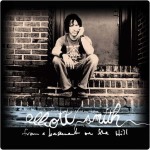 From A Basement On The Hill (2004)
From A Basement On The Hill (2004)
Elliott Smith left behind an incomplete album when he passed away, and his family hired his former producer Rob Shnapf and ex-girlfriend Joanna Bolme to gather tracks together and put the finishing touches on the songs. It’s not as bright as its predecessor, but these 15 tracks represent an incredible collection of songs that showed Elliott Smith wasn’t even close to losing his momentum. The final result, as Smith sings on one of the album’s highlights, is a fond farewell to a friend.
10/10
Listen: Elliott Smith – “Coast To Coast”
Digging into the archives of unreleased tunes by Elliott Smith, nobody could have imagined that a double-album of gems could have been the result. Most artists have b-sides that are for completists only; Elliott Smith’s b-sides would represent a career highlight for most artists. We can only hope that there are more archives of unreleased material as good as songs like “Either/Or” and the magnificent cover of Big Star’s “Thirteen.”
9/10
Listen: Elliott Smith – “Either/Or”
Music Video Showdown: Kanye West’s “Power” vs. Eminem’s “Love The Way You Lie”
Leave a Comment
Tonight was a big night for hip-hop music videos, as two powerhouses of the industry revealed music videos, both taking very different approaches. Let’s look closely at both and see what we can determine from both.
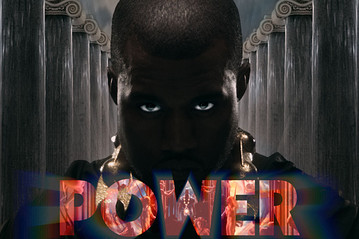 First, we have Kanye West’s “Portrait of Power,” which he described on his new twitter as “a portrait…not a video!” Watching the 90 second clip, it becomes instantly clear why Kanye would say this. The video is a hyper-stylized art piece that barely function as traditional video at all: it’s more like a picture infused with touches of motion, like the flowing of hair and the slightest movements taking place as two men fly through the air, poised to separate Kanye’s head from his body, thereby liberating his ego from its worldly constraints. The portrait begins with a close up on Kanye, adorned with the heaviest looking bling I’ve ever seen hanging around his neck, and the camera slowly pans out to reveal more and more detail, until finally an art-scene not far removed from the detail that adorns the Sistine Chapel is revealed. All the while, the first single from West’s upcoming as-yet-untitled fifth album plays in the background, which finds West back in prime form as he raps over a chanting choir and a sample of King Crimson’s “21st Century Schizoid Man.” As art, there are clearly multiple meanings to be taken away from this and that will be argued fervently by fans, but it lacks entertainment value. West is clearly thinking on a higher artistic plain here. Frankly, this bodes extremely well for the upcoming album – the last time West really pushed himself to be the greatest was on his masterpiece, 2005’s sprawling Late Registration. If West is back to those levels of artistic output, the upcoming LP is a contender for album of the year.
First, we have Kanye West’s “Portrait of Power,” which he described on his new twitter as “a portrait…not a video!” Watching the 90 second clip, it becomes instantly clear why Kanye would say this. The video is a hyper-stylized art piece that barely function as traditional video at all: it’s more like a picture infused with touches of motion, like the flowing of hair and the slightest movements taking place as two men fly through the air, poised to separate Kanye’s head from his body, thereby liberating his ego from its worldly constraints. The portrait begins with a close up on Kanye, adorned with the heaviest looking bling I’ve ever seen hanging around his neck, and the camera slowly pans out to reveal more and more detail, until finally an art-scene not far removed from the detail that adorns the Sistine Chapel is revealed. All the while, the first single from West’s upcoming as-yet-untitled fifth album plays in the background, which finds West back in prime form as he raps over a chanting choir and a sample of King Crimson’s “21st Century Schizoid Man.” As art, there are clearly multiple meanings to be taken away from this and that will be argued fervently by fans, but it lacks entertainment value. West is clearly thinking on a higher artistic plain here. Frankly, this bodes extremely well for the upcoming album – the last time West really pushed himself to be the greatest was on his masterpiece, 2005’s sprawling Late Registration. If West is back to those levels of artistic output, the upcoming LP is a contender for album of the year.
 In the other corner, we have rap megastar Eminem revealing the music video for his incredible “Love The Way You Lie,” featuring a hook courtesy of pop songstress Rihanna. Following two rough albums, Eminem is finally back on track with his latest (aptly titled Recovery), and “Lie” is the finest song he’s penned in ages, showing the capacity to have emotion better than he ever has before. The video, featuring Hollywood cuties Meghan Fox and Dominic Monaghan, is a gripping portrait of a relationship that can only be defined as truly love-hate, with passionate and heartfelt performances by both Fox and Monaghan. Rihanna pulls off her scenes with a fiery intensity like I have never seen from her: the raw emotion with which she sings “just gonna stand there and watch me burn?” shows that she is drawing on past experiences to fuel her performance, and the audience is reminded of how quickly her world fell apart following the infamous incident with R&B singer Chris Brown by the burning buildings surrounding her throughout. Eminem, smartly, doesn’t just want to take center-stage and play the victim in his video like Kanye does in his. Instead, he sits back and raps, alone in a huge field, perhaps symbolizing the anguish and pain of being alone with thoughts in his head that stem from that weird place that makes humans hurt the people they love most. The video, as a whole, is tense, gripping, and emotionally forthright, and the traditional medium is suitable for a song that is as radio-ready as anything Marshall Mathers has ever put to tape.
In the other corner, we have rap megastar Eminem revealing the music video for his incredible “Love The Way You Lie,” featuring a hook courtesy of pop songstress Rihanna. Following two rough albums, Eminem is finally back on track with his latest (aptly titled Recovery), and “Lie” is the finest song he’s penned in ages, showing the capacity to have emotion better than he ever has before. The video, featuring Hollywood cuties Meghan Fox and Dominic Monaghan, is a gripping portrait of a relationship that can only be defined as truly love-hate, with passionate and heartfelt performances by both Fox and Monaghan. Rihanna pulls off her scenes with a fiery intensity like I have never seen from her: the raw emotion with which she sings “just gonna stand there and watch me burn?” shows that she is drawing on past experiences to fuel her performance, and the audience is reminded of how quickly her world fell apart following the infamous incident with R&B singer Chris Brown by the burning buildings surrounding her throughout. Eminem, smartly, doesn’t just want to take center-stage and play the victim in his video like Kanye does in his. Instead, he sits back and raps, alone in a huge field, perhaps symbolizing the anguish and pain of being alone with thoughts in his head that stem from that weird place that makes humans hurt the people they love most. The video, as a whole, is tense, gripping, and emotionally forthright, and the traditional medium is suitable for a song that is as radio-ready as anything Marshall Mathers has ever put to tape.
So, what’s the verdict on these two videos? Personally, I am going to give the upper hand to Eminem’s powerful clip, which will draw you in and leave you on the edge of your seat from the moment you press play. You’ll admire Kanye’s “Portrait of Power” for its ambition and its non-traditional structure, but you’ll probably enjoy Eminem and crew more as a piece of entertainment.
Watch the two videos at the links below:
Kanye West – “Portrait of Power”
Eminem feat. Rihanna – “Love The Way You Lie”
Candy Claws – ‘Hidden Lands’ (2010)
Leave a Comment
Every so often, a record will drop in my lap that is simply and truly unique. It’ll be something that has its feet firmly planted on the solid ground of a rich musical past, but the ideas will be jumbled and rearranged in ways that aren’t traditional. This year there have only been a handful of records that feel truly unique and ground-breaking from a stylistic point of view: Flying Lotus’ Cosmogramma, These New Puritans’ Hidden, and Sleigh Bells’ Treats are all records that come to mind. All questions of artistic merit aside, these records took the sounds of the past and filtered them through interesting aesthetic choices. Flying Lotus took electronic IDM and hip hop beats and mixed them with space-prog and jazz for a turbulent record that takes you on a journey past the planets and into the outer realms of the human imagination. These New Puritans took tribal drums from Japan and mixed it with the traditions of electro-rock and Western classical orchestrations, churning out a huge record in the process. Sleigh Bells took hardcore punk, glitchy hip hop beats, and bubblegum pop and somehow made them compatible.
We can add a newcomer to this list: Hidden Lands by Candy Claws. Hidden Lands takes the weightless atmosphere of chillwave, the ethereal vocals of dream pop, and Brian Wilson’s best chamber-pop orchestrations a la Pet Sounds, and mashes them all together, creating a record that sounds like a trip across the sun-soaked beaches of a fantasy world only imagined in the wonderful imaginations of innocent youth. It’s hard not to get lost in the beautiful and dramatic soundscapes, with vocal performances that are so beautiful and gentle that they are instantly accessible. If the feeling of falling asleep had a soundtrack, Candy Claws have made it.
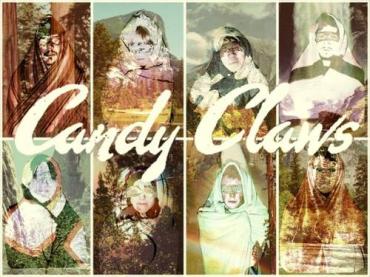 Compositionally, Hidden Lands is remarkable for a few reasons. Firstly, every song is made up of many parts (the band tours as an eight-piece act), so the feeling of orchestral grandeur is prominent for the whole record. The vocals, however, are so intimate and gorgeous that you feel like you aren’t being overwhelmed by an orchestra but rather eased into a welcoming dream-state. Candy Claws have taken Debussy’s Prélude à l’après-midi d’un faune and made it pop music. If Kevin Shields had tried to make Pet Sounds, the result would have sounded like Hidden Lands.
Compositionally, Hidden Lands is remarkable for a few reasons. Firstly, every song is made up of many parts (the band tours as an eight-piece act), so the feeling of orchestral grandeur is prominent for the whole record. The vocals, however, are so intimate and gorgeous that you feel like you aren’t being overwhelmed by an orchestra but rather eased into a welcoming dream-state. Candy Claws have taken Debussy’s Prélude à l’après-midi d’un faune and made it pop music. If Kevin Shields had tried to make Pet Sounds, the result would have sounded like Hidden Lands.
The band has also stated that each song on this album contains a musical sample from one of the other songs, making this record interestingly post-modern in the sense that one cannot determine the origins of the samples at all. This fact leads listeners to a classic chicken-or-the-egg paradox, but this time it is a paradox of composition: from which song did the sample originate? The songs blend seamlessly, all interconnected on a deep compositional level. You can’t fault their ideas, even if the sonic nuggets used as samples are difficult to find. There are hidden treasures aplenty on this psychedelic masterpiece.
Then there’s the lyrics, which are not “written” by the band in the traditional sense of composing lyrical content. After selecting passages from Richard M. Ketchum’s book The Secret Life of the Forest, the band ran them through translation software on the internet, translating the passages back and forth between English and Japanese until they reached an equilibrium where no further changes were made in the translating process. The lyrics represent a weird poetry that are derived from technology and language, creating art in the process. It’s a remarkably interesting way to ‘write’ lyrics for an album, but it yields captivating poetry that suits the music perfectly: “Trees, like all other forms of life, trace their origins back to the sea” becomes “Tree of life in the sea.”
It’s an album that raises interesting questions about the nature of art and the nature of pop music, stretching the definition of “intellectual property” to include plagiarized passages that have been translated and transformed, while also stretching the boundaries of pop music to include something so beautiful and remarkably fresh and unique. You have to hear this.
Listen: Candy Claws – “Sunbeam Show”
